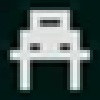Then picking the exact correct thing
Here’s another: the human ear is phenomenal at determining where in 3d space a sound is coming from. Most animals can only determine direction and can’t really place a sound vertically. Watch what your cat or dog does when they’re looking for the source of a noise, it takes them a lot longer.
the human *ears. we need both ears working together to determine the source of a sound.
teamwork makes the dream work, people.
https://en.m.wikipedia.org/wiki/Sound_localization
If someone wants to read an interesting (but complex) explanation of how it works
iirc it’s because human ears are slightly offset to each other vertically. The brain then calculates the time difference it takes each ear to hear it. Basically triangulation.
Triangulation is 2 dimensional, the 3 dimensional equivalent would be “tetrahedralization”.
I’ve never liked this explanation because if that was all there was to it, it would still only localize to a slanted line in front of us.
Say for example the right ear is higher (I tried finding which one normally is, but couldn’t find a good answer) in this case it would not be feasible without other clues to tell the difference between a sound being higher up and slightly to the left, or lower and slightly to the right. It’s not a significantly different situation from the ears being the same height.
In reality there are other clues, largely based on the shape of our ears slightly changing the sound in learned ways based on the angle it comes from.
One blindspot is that the ear is not good at determining whether the sound comes directly in front or back of the head.
Your tongue is also super tactile. We spend most of our toddler years discovering this.
You can look at anything around you, anything, and your brain knows exactly what it would be like to lick it, even if you’ve never done it before. Taste, texture, residue etc… it’s quite freaky
Oh and my thighs are really good at imagining my phone just buzzed.
deleted by creator
You can look at anything around you, anyrhing, and your brain knows exactly what it would be like to lick it
Siri, how do I unthink a thought?
Alcohol, ridiculously large amounts of
Weed is better for forgetting. Alcohol is better for not caring.
Yeah, if you tilt your head back and pretend you’re shaking a salt shaker into your mouth, you will actually taste salt.
I don’t taste anything. Does it matter how hard I shake it?
You have to close your eyes, open your mouth wide and put your tongue out for the desired effect. Maybe it helps if you have some bystanders who cheer you on.
Use two hands.
When I was an adolescent, I dreamt that I performed oral sex on a woman by putting my entire head inside of her vagina. Turns out that cunnilingus is nothing like my premonition, but I certainly had the texture figured out.
There are 100% women who would be into that. I’m not saying they’re common, but I may have met at least one of them.
deleted by creator
Also locating needed nightstand items in the dark of night
I must have gotten a defective one, then. My hand sucks at that.
As a single dude, I can tell You, that’s not the only thing a human hand is good at.
deleted by creator
Dick, take a look out of starboard, it looks like a huge…
deleted by creator
… erection … of pillars in the vast wetlands …
What’s in my pocket?
handses
Ohhhhhh, tricksy hobbitses. We hates them.
I’m more curious about what’s in the box.
Lint.
Pocket sand
The area immediately before your hand is also really good at letting you know the time.
Want to truly understand how good it is? Try getting a specific thing out of a pocket with a thick glove!
We’re also the absolute best at throwing.
You can also scratch pretty much any part of your butt crack just by feel.
With your hand.
Exactly correct!
I disagree, if my pocket is busy I need to take things out to tell the difference between them. Also, my hands can’t tell the difference between my cards.
I wonder if this is an acquired skill. I’m reminded of working on cars and having to build “touch sight” where you “see” things hidden behind an engine block or other obstruction by feel alone.
And human eyes are incredible at seeing things
Human balls are incredibly great at feeling immense pain at even the slightest slap with a riding crop.
Then picking the exact correct thing
It can easily tell what item is a coin, but how much that coin is worth is hard for it to do. (Trying to grab a nickel vs a quarter, etc.)
Euro coins have different knurling around the edge of the coin for accessibility reasons. It has the side effect of helping a lot when trying to find the right ones blindly in your pocket.
US coins too. Big, small, thick, thin, smooth, knurled.
Euro coins have different knurling around the edge of the coin for accessibility reasons. It has the side effect of helping a lot when trying to find the right ones blindly in your pocket.
South America too, right?
As an American, when I travel and see different shaped coins in different countries, some with holes in the middle even, just trips me out, seems so weird. We’re so used to standard round feels similar coins here.
Yeah I could definitely identify each euro coin by feel.
A nickel is smaller and thicker, and has a smooth edge compared to the quarter. Can you not tell the difference?
This guy fishes in his pockets with his hands.
A nickel is smaller and thicker, and has a smooth edge compared to the quarter. Can you not tell the difference?
When you’re jiggling around in your pocket for it and there’s other coins in there too, it becomes harder to do.
I’m not saying there’s a 0% chance of figuring it out by touch alone, just that by touch identifying a coin (vs a not-coin) is a lot easier to do than by touch identifying what amount an individual coin is worth. (In the U.S. at least.)
When you’re jiggling around in your pocket for it and there’s other coins in there too, it becomes harder to do.
Well, sure. Adding many variables usually makes anything harder to do. But that generally just means it takes a little more effort.
Are your hands horribly mangled or something? Am I bringing up something hard for you to deal with?
Are your hands horribly mangled or something? Am I bringing up something hard for you to deal with?
Hands? It’s horribly hard to fit my trunk into my pockets.













